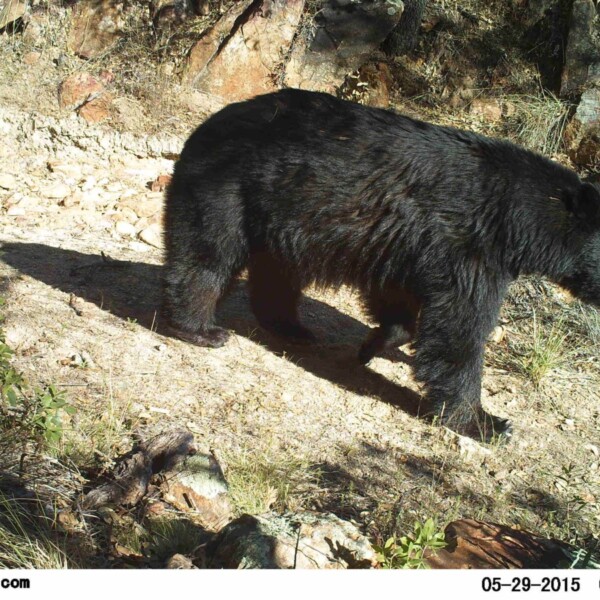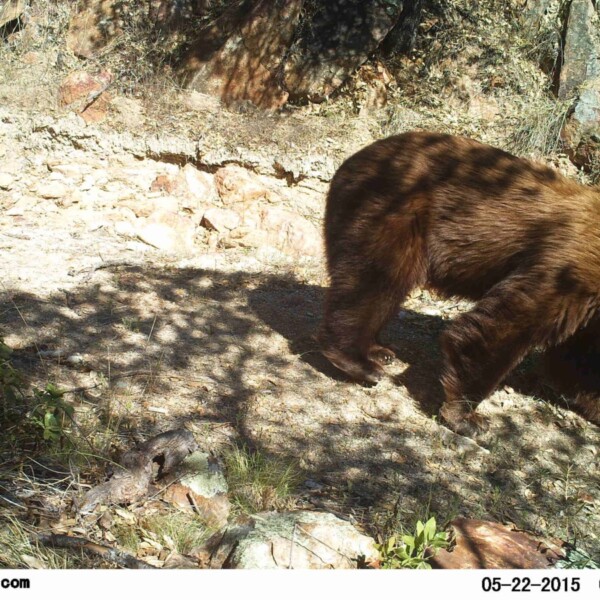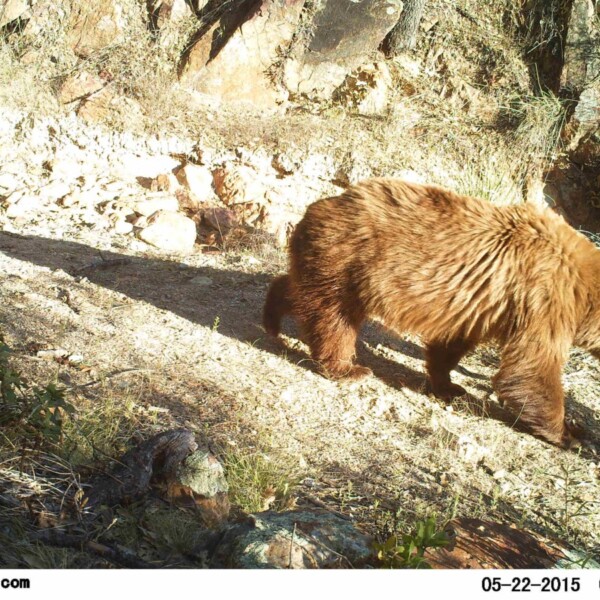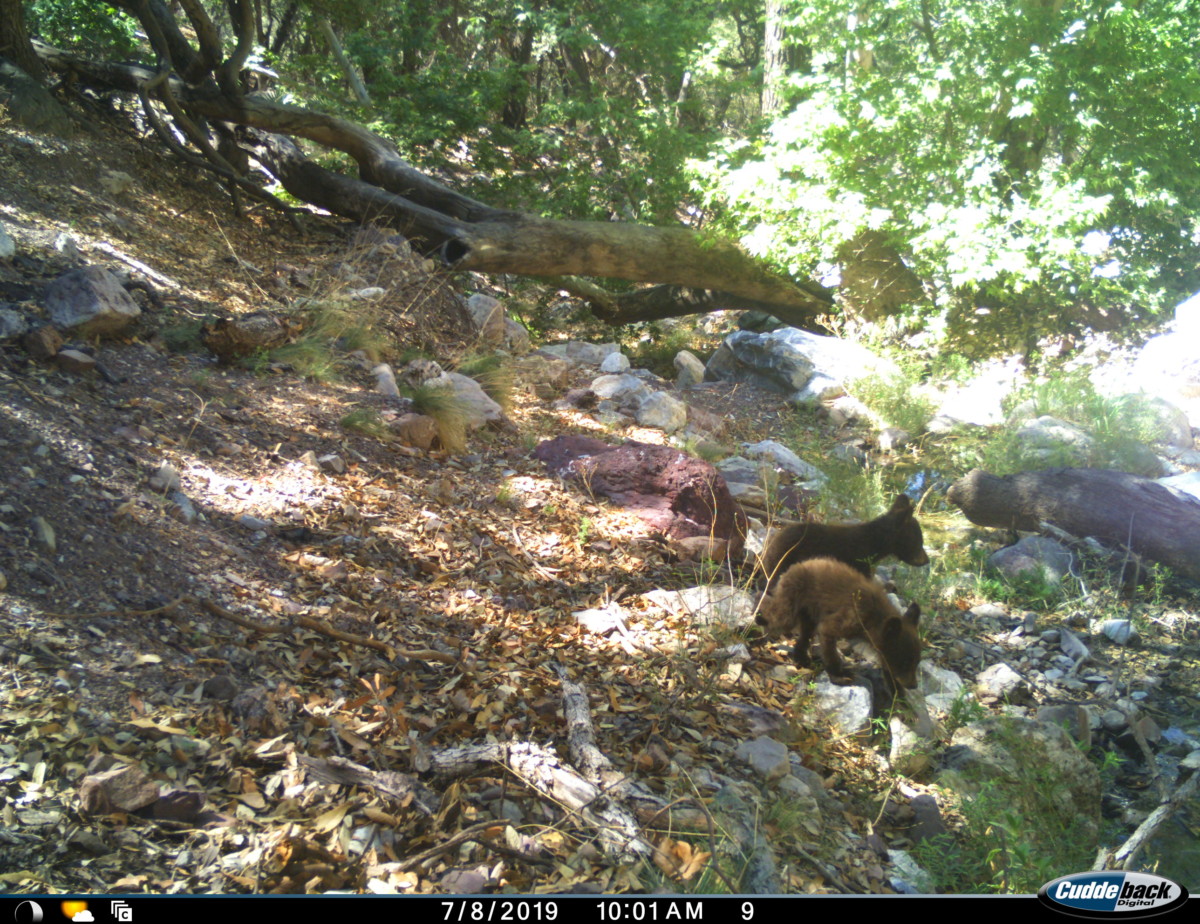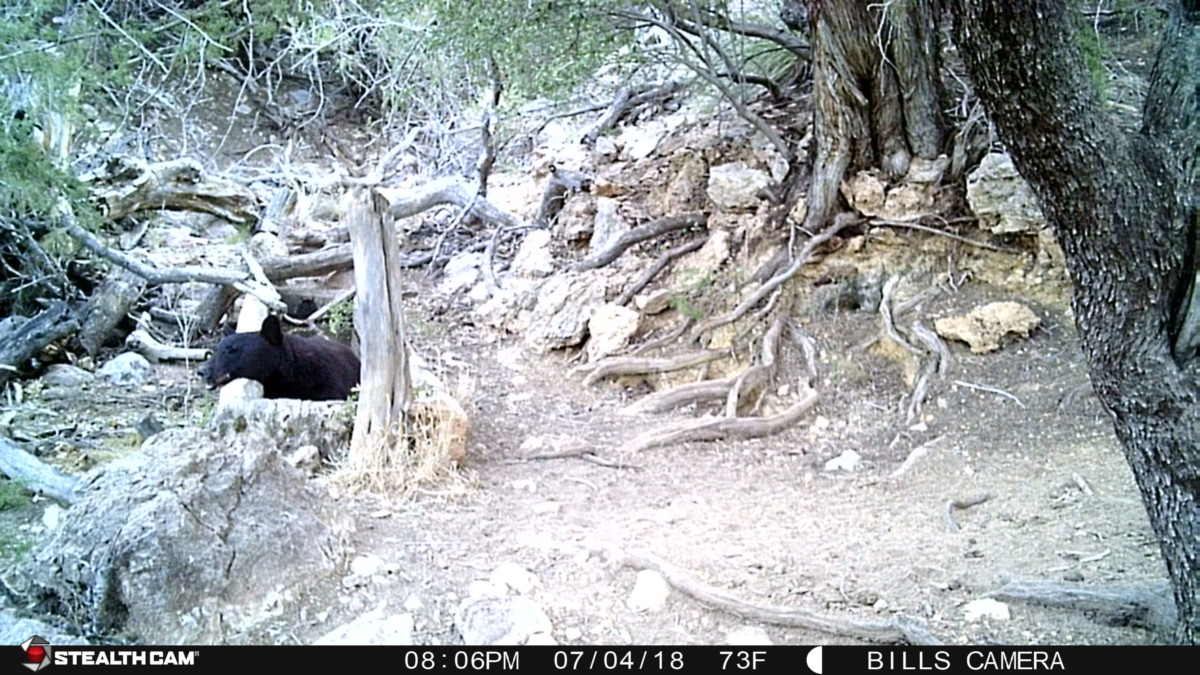What marks spring in the Sky Islands better than the sight of bears coming out of hibernation*? In honor of this species — a harbinger of warmer months and blooming flora — we’re dedicating today’s Friday Creature Feature to black bears.
Name
Common — Black bear
Scientific — Ursus americanus
Spanish — Oso negro
Description
Almost everyone knows what a black bear looks like. Just hearing the name conjures up images of a hulking, black-furred quadruped that hibernates* through the winter and emerges in the spring to eat berries and have cubs. After all, the black bear is the most common bear species in the United States, found in 80% of U.S. states (source: Arizona-Sonora Desert Museum).
Fun fact: Smokey Bear, the mascot for the U.S. Forest Service, is a black bear.
Despite being called “black bear,” this species can have black, brown, golden brown, blue-ish, or (rarely) white fur. Black bear is also smaller than grizzly bear—but don’t let that fool you! Male black bear, known as boars, still weigh in around 600 pounds! That’s nearly four times greater than the weight of female black bear (sows), which average around 150 pounds.
Habitat
Black bear are found throughout North America in Canada, the United States, and Mexico. In Arizona, they are the only bear species. Black bear tend to adapt to their environment, eating whatever food is available and making dens in caves or cliff overhangs. In the southwest, this includes abandoned mining shafts that haven’t been sealed off.
Black bear prefer to make their homes in areas with tree cover. In our Border Wildlife Study, they are most often detected by our trail cameras in the oak woodlands of the Huachuca and Patagonia Mountains.
They are also migratory and can have up to 20 square miles in their territory (though some sources say their range can extend to 100 square miles)! In the Sky Island region, this territory includes places where the U.S.-Mexico border wall are in place. Through tracking, we have documented areas where black bear has squeezed under wire fencing or between Normandy-style vehicle barriers in order to travel between countries.
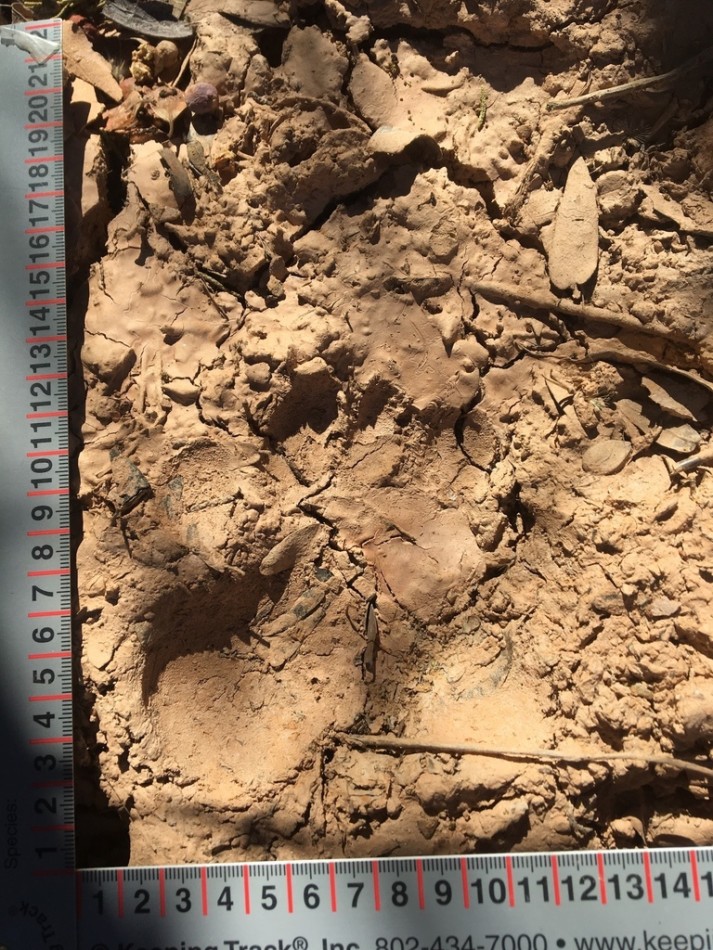
A black bear track documented near the U.S.-Mexico border in November 2019. Credit: Sky Island Alliance
Behavior
Despite the infamous reputation bear species have, black bear are mild in disposition. They are most active at dawn and dusk. Like other bear species, black bear go into hibernation* for the winter—which means they slow down their metabolism and use their thick fur coats to keep them warm so they burn less energy. Hibernation* for black bear can last up to 100 days (source: North American Bear Center).
Female bears will often mate during the summer months and be pregnant before hibernation*. During this period, they will birth their cubs, usually two or three in a litter.
*Fun fact: Bear species in general don’t actually experience true “hibernation.” Instead, they undergo a period of winter lethargy called “shallow torpor,” a lowered state of body function. (Source: Mammalogy: Adaptation, Diversity, Ecology.)
Black bear can swim and like to wallow in springs during our region’s hot summer days. They can also run up to 30 mph and climb trees. This species generally lives around 20-25 years in the wild and is mostly vulnerable to starvation and hunting.
Diet
Black bear are master foragers. They eat insects, berries, seeds, nuts (like acorns), fruits, and succulent plants, as well as sometimes carrion if pickings are scarce. Their sense of smell is excellent, allowing them to pick up the scent of food sources from over a mile away (source: NPS)!
Status
Multiple sources estimate that North America’s black bear population is over 750,000. This species’ population is considered healthy and is not on any list.
Sources
- https://www.desertmuseum.org/bear/morefacts.php
- https://bear.org/quick-black-bear-facts/
- https://bear.org/black-bear-range/
- https://www.nps.gov/yose/blogs/bear-series-part-one-a-bears-sense-of-smell.htm
- Kenagy, G. J.. (2017). Mammalogy: Adaptation, Diversity, Ecology . Fourth Edition. By George A. Feldhamer, Lee C. Drickamer, Stephen H. Vessey, Joseph F. Merritt, and Carey Krajewski. Baltimore (Maryland): Johns Hopkins University Press.



